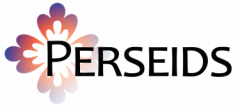Contents
Mapping the Classical Islamic World (Tufts Spring 2014)
Overview: What has Baghdad to do with Damascus—or with Rabat? We see the Islamic world as a series of nations on the map of the twenty-first century, but the real map has little to do with early twentieth century boundaries and much to do with the links that structure the Islamic world that began to be forged fourteen hundred years ago. Through the study of the detailed descriptions contained in the work The Best Division for Knowledge of the Regions by al-Muqaddasi (10th century), the last representative of the classical school of Arab geography, students will examine the geographical, economic, political, religious and cultural factors that kept this world together and pulled it apart. By encountering the structure of the Islamic world of the past, students will gain an invaluable insight how it is organized in the present and its possibilities for the future.
Digital tools will facilitate these explorations. Students will work with Geographic Information Systems (GIS), one of the most exciting (and marketable) new technologies to map the Islamic world. Digital multilingual tools will facilitate students’ encounter with the original texts, whether or not students have had prior exposure to Modern Standard Arabic. Students of Arabic will have an opportunity to work with Classical Arabic sources using state-of-the-art multilingual services to leverage their current knowledge. Students with no knowledge of Arabic will use existing English translations that can be used in combination with the original text. All students will have an opportunity to contribute to a major new project that will reinvent how we visualize and understand the Islamic World. By the end of the course we will produce an interactive map of the classical Islamic world, with its major provinces, towns, villages and routes that connected them. Valuable in and of itself, it will become a crucial tool for the study of other primary sources on Islamic history.
Starting Data Sets
Toponyms
- Arabic name
- Transliterated name
- Coordinates
- Characterization
- location/settlement (city, town, quarter, village)
- province/set of settlements
- Name variants (simplified transliteration, English version; alternative spellings)
- Description (can be multiple > with references/links to the sources)
- NB: Frequency of mentions in specific sources (optional; this is a research layer)
Grouping/Research Layers
- Provinces
- 300 toponyms belong to about 20 provinces
- different Arab authors “group” places differently; we want to see/show these differences
- Regions / Macro Regions
- several provinces can be grouped into larger regions
- this is needed for analytical purposes
- these are multiple layers
- Dynastic, cultural, religious etc layers
- different Arab authors offer various descriptions of settlements
- Chronological layers
- layers described above will be applicable to specific periods; we need chronological markers in order to generate chronologically accurate maps
Clusters
- macro region
- coordinates
- alternate coordinates?
- angle?
Textual Sources available for this Project
NB: There are perhaps about 20 sources that can are suitable for this project, and, ideally, all of them should be studies in a similar fashion.
- Geographical treatises offer general overviews of geography with descriptions of regions, trade routes, culture, peoples, religious groups, sacred geography, marvels
- EN/AR: al-Muqaddasi’s “Best Divisions” (machine-readable Arabic / scanned PDF (not ©) / hard-copy English ©)
- to be added
- Travelogues describe the travels of particular individuals, often offer details on the subjects that are covered in geographical treatises, but the extent of coverage is usually limited to given itineraries
- EN/AR: Ibn Fadlan (machine-readable Arabic / English translation ©)
- EN/AR: Ibn Jubayr (machine-readable Arabic / English translation ©?)
- EN/AR: Ibn Battuta (machine-readable Arabic / English translation ©)
- FA/AR/EN: Nasir-e Khosraw (machine-readable Arabic translation) / English translation from Persian ©)
- Dictionaries often provide similar cultural and historical details, but their coverage is more significant, although more cursory; describe locations of places and distances.
- AR: Yaqut’s Mu’jam al-buldan (“Dictionary of Countries”) contains descriptions of about 14,000 places (machine-readable Arabic / scanned PDFs of 2 different editions, one not ©)
- AR: al-Sam’ani’s Kitab al-ansab (“Dictionary of Descriptive Names”) contains descriptions of about 4,400 names, where about 50% are toponymic (machine-readable Arabic / scanned PDFs of 2 different editions, one not ©)
- this dictionary can also be used to study Arabic and Islamic culture in general: tribal affiliations; religious affiliations; secular occupations; religious specializations; idiosyncrasies in naming practices.
Desired additional data sets
- Trade Routes
- Large Regions
- Districts
- Cities (District Centers)
- Towns and Villages (Satellites)
- Main Roads
Desired Visualizations: Descriptions and Examples
- Dynamic display of the “Divisions” text, linked to maps, dictionaries
- Color-coded visualization of research layers
- Colored Points, for example:
- Colored Lines/Arcs that connect Colored Points:
- Colored Polygons / Colored Areas (optional):
- Layered maps of social, religious, dynastic and other data.
- similar to the examples above, simply a different grouping criteria
- Dynamic display of the “Divisions” text, linked to maps, dictionaries
Work Plan
- Create CITE collections of named objects and relationships, assigning URIs to:
- Places
- Regions
- Provinces
- Clusters
- Trade Routes
- Districts
- Cities (District Centers)
- Towns and Villages (Satellites)
- Main Roads
- Seed collections with:
- Existing data from Maxim’s spreadsheets
- Data mined from the textual sources
- Pick a target region,trade route, etc. for which the class can produce reasonably complete data and produce a visualization by the end of the class
- Identify a few discreet tasks students can do to build up the data sets
- Identify existing tools and interfaces for the students to work with the collections to complete these tasks.
Model examples
- http://orbis.stanford.edu/: ORBIS The Stanford Geospatial Network Model of the Roman World
- http://songgis.ucmerced.edu: The Digital Gazetteer of the Song Dynasty
- http://pleiades.stoa.org/:
